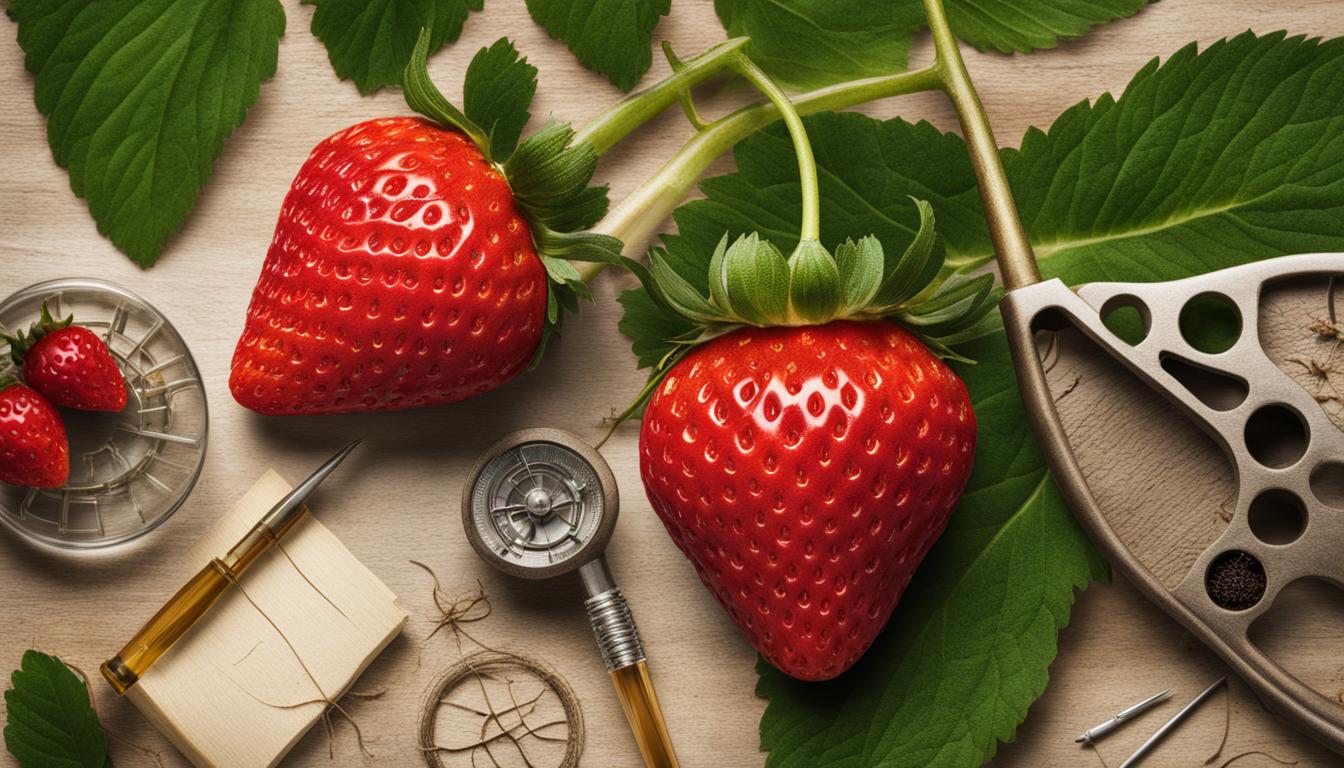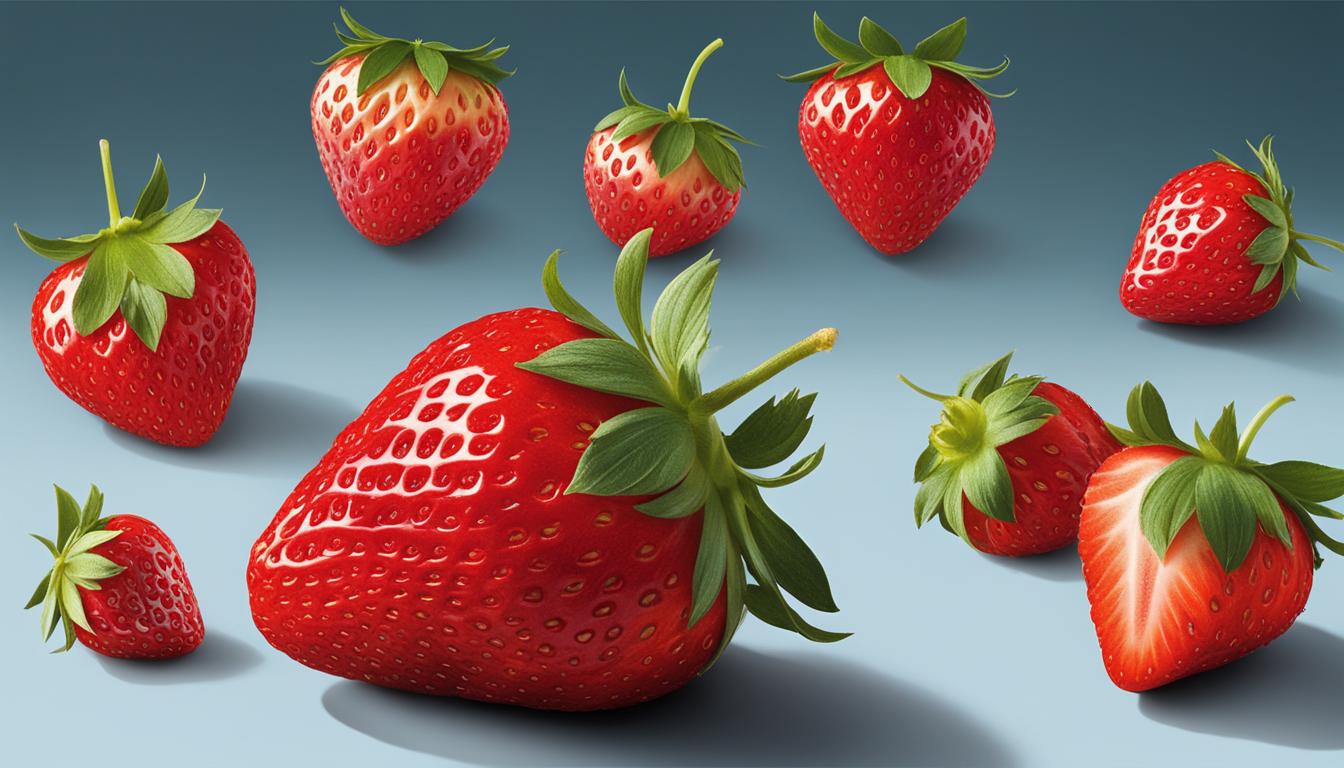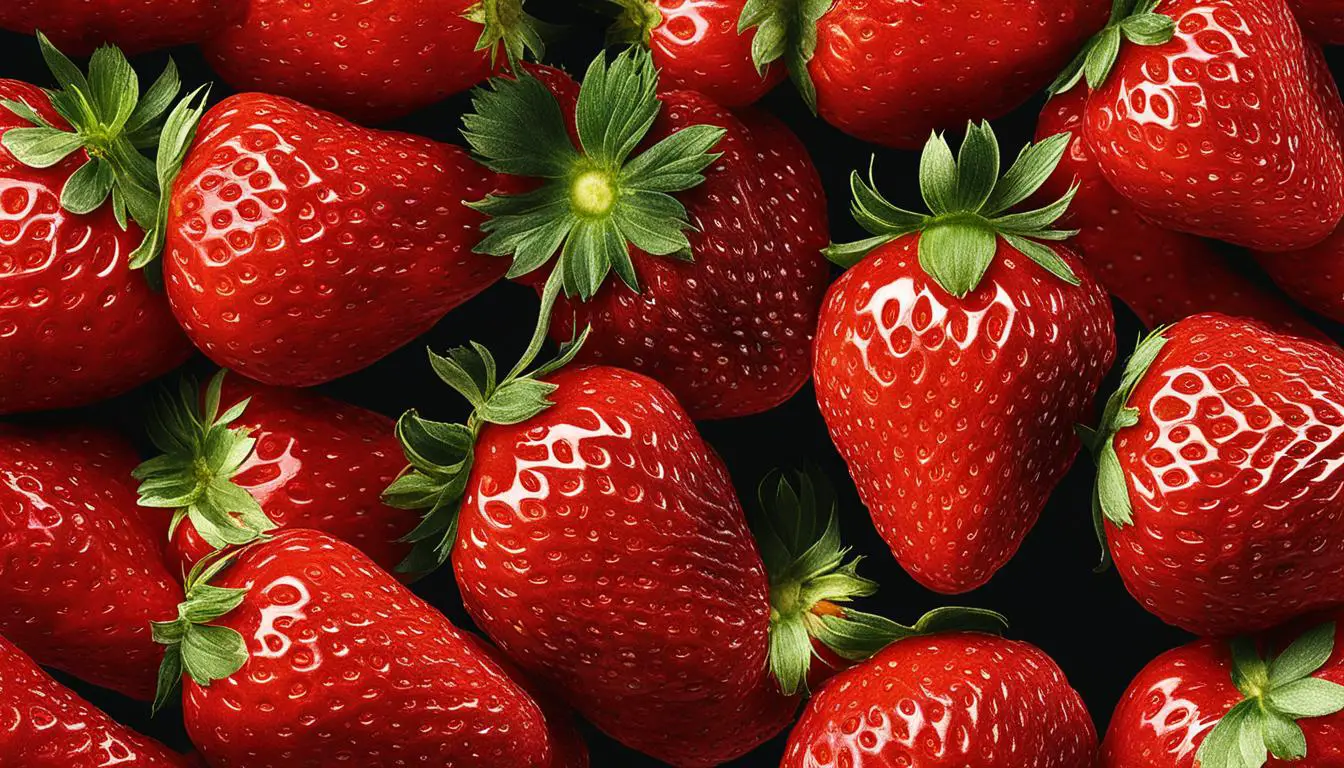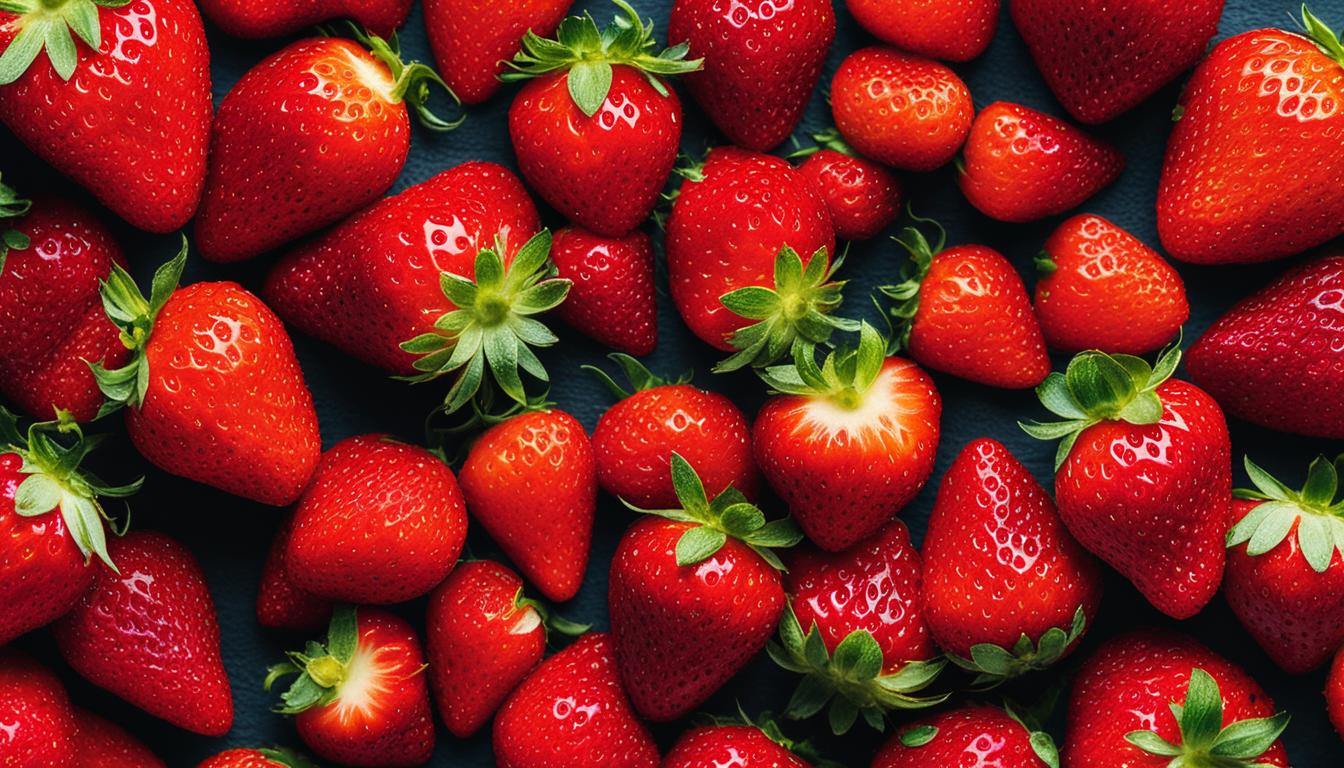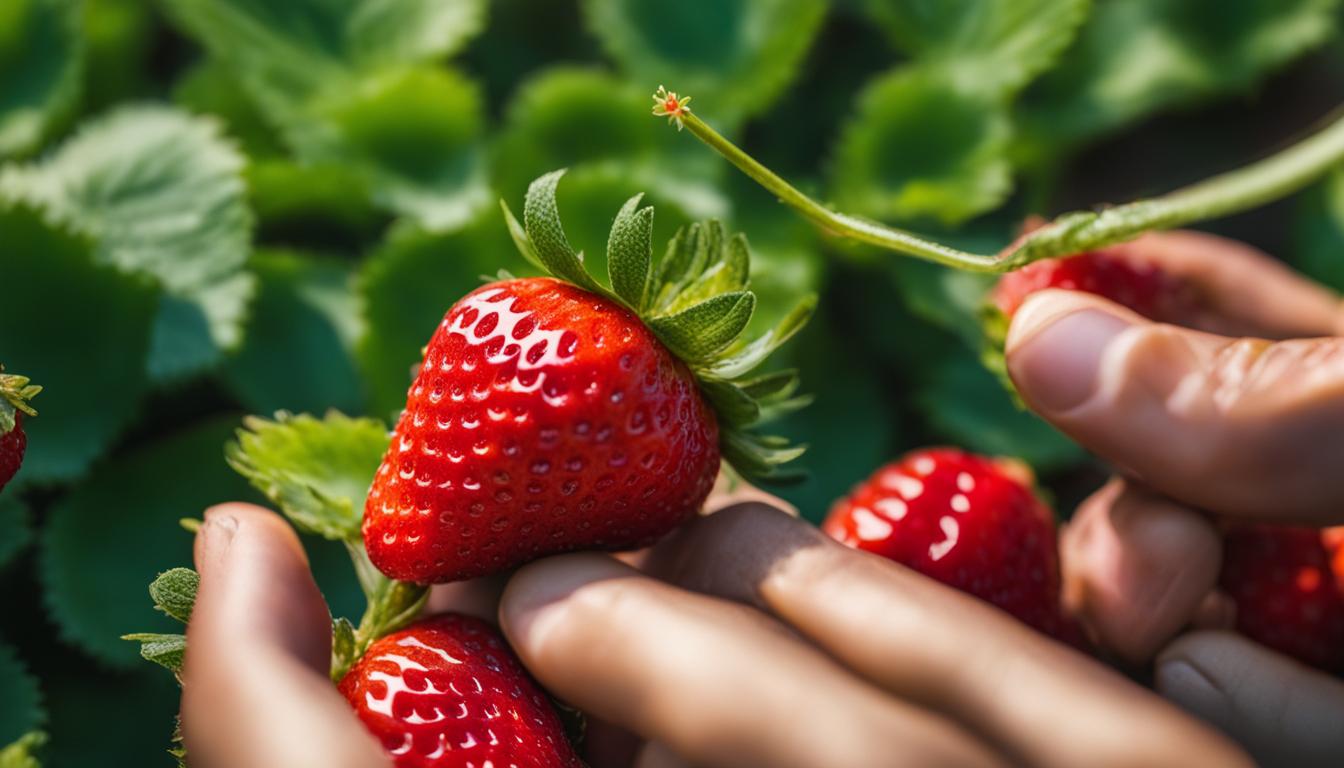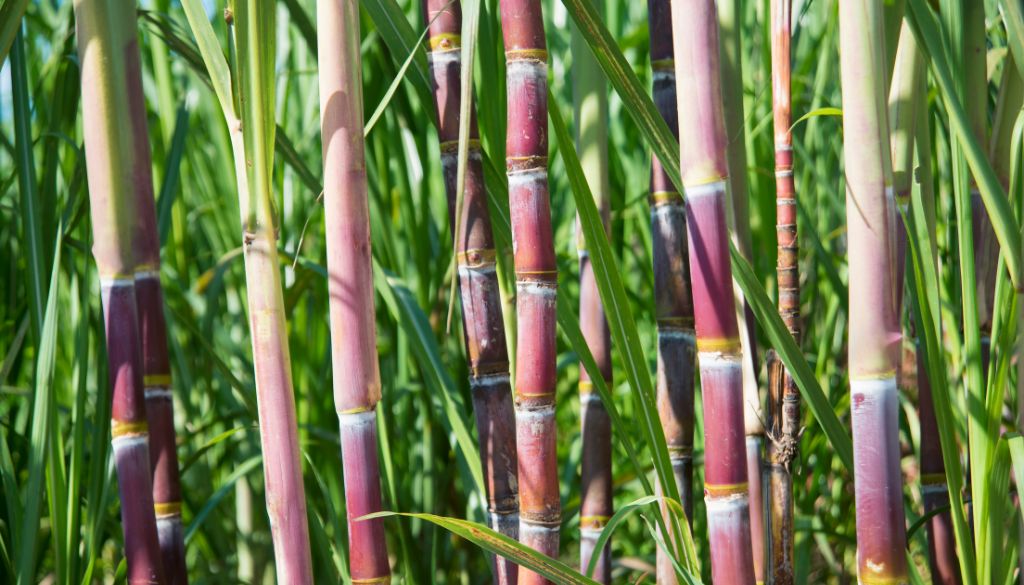In today's article I will explain to you in a very detailed way what Brie cheese is, and why it is so famous all over the world.
O queijo Brie é um queijo macio, cremoso e amanteigado produzido em todo o mundo. Tem uma crosta comestível lisa e florida feita de bolor branco e um centro rico e cremoso.

O queijo Brie é tipicamente feito a partir de leite de vaca, embora também possa ser produzido a partir de leite de cabra. O queijo é rico em gordura e cálcio, com uma quantidade decente de sal. É também rico em proteínas e vitaminas A e B-6, bem como em minerais, incluindo selénio.
Espero que este gostinho inicial tenha suscitado a sua curiosidade? Se seim, então fique ai e continue a ler este artigo, que certamente aumentar o seu conhecimento por este delicioso queijo.
Índice
O que é o queijo Brie
Muitos nos perguntam e com razão, afinal o que é o queijo brie? Para muitos é bem desconhecido e é por isso que pretendemos clarificar o leitor.
O Brie é um queijo de pasta branca, de pasta mole, normalmente feito a partir de leite de vaca. Tem uma casca de bolor branco, que é considerada uma iguaria gourmet. O Brie é originário de Seine-et-Marne, França, e é um queijo de pasta mole de fazenda.
O Brie tem um sabor distinto, amanteigado, frutado e cada vez mais terroso à medida que envelhece. Tem uma textura a pingar, cremosa e um aroma distinto a terra.
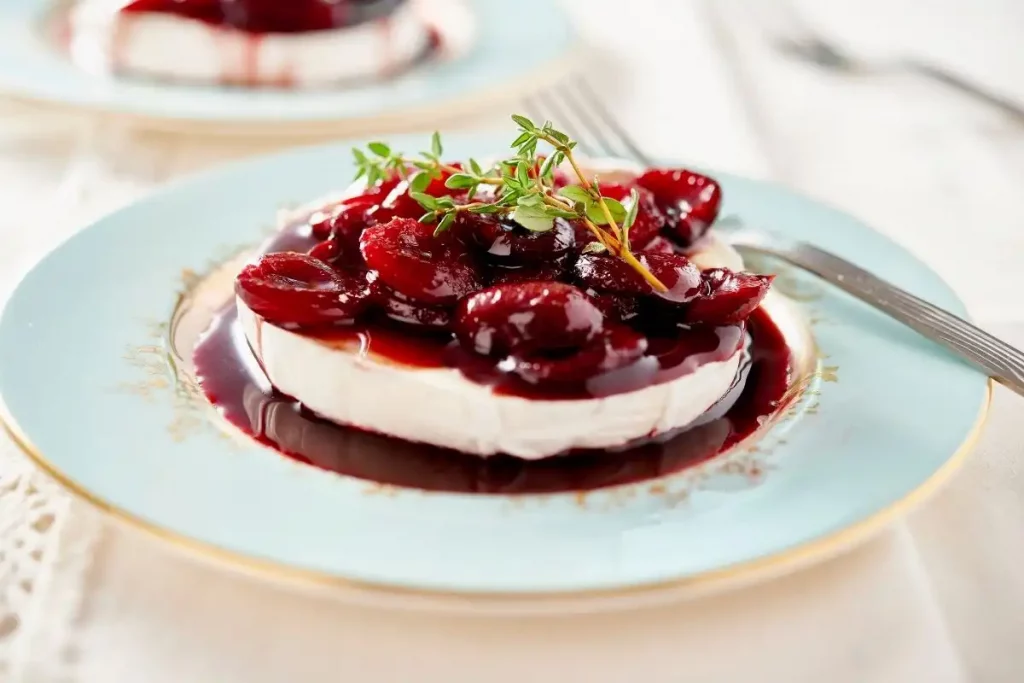
O brie francês autêntico não pode ser importado para o Brasil, porque é feito com leite cru e, portanto, teria de ser envelhecido durante pelo menos 60 days para ser elegível para importação. Infelizmente, essa quantidade de tempo tornaria o brie demasiado maduro para ser consumido.
No entanto, o brie francês pode ser encontrado no Brasil, onde é fabricado como um queijo de maturação suave com um interior branco-creme e casca branca e vem em rodelas. O brie francês estabilizado é cortado antes da maturação para lhe dar um maior tempo de conservação.
O sabor é amanteigado, rico, e característico do brie francês tradicional feito a partir de leite cru. Torna-se mais terroso e frutado com o tempo. O Brie de leite pasteurizado tem um sabor mais ameno do que o verdadeiro brie francês.
O Brie é um dos queijos franceses mais conhecidos, e também é fabricado noutros países, tais como no Brasil, Estados Unidos, etc. O leite de vaca inteiro e desnatado pasteurizado, bem como o leite de cabra, são utilizados para fazer versões nacionais e internacionais de brie.

Origin of Brie cheese
Antes nos alongarmos a falar em mais detalhe sobre o queijo brie, é fundamental compreendermos a sua história e identidade.
O mais conhecido de todos os Bries é o Brie de Meaux, na nossa opinião é o maior de todos. Este queijo maravilhoso, amanteigado e terroso tem sido um dos favoritos da realeza em várias ocasiões.
Brie De Meaux ainda é feito à mão, embora a um distancia de 50 quilómetros a leste de Paris, na região de Ile-de-France. Tem uma longa história, datada de há mais de mil e duzentos anos!
Na Idade Média
The AOC Brie de Meaux foi originalmente fundada na Idade Média pelos monges do Priorado de Rueil in Brie. A sua aclamação começou quando, em 774, Carlos Magno, o imperador francês, visitou o Priorado e descobriu um queijo que lhe agradou tanto que solicitou que fosse enviado para o seu castelo em Aachen.
In 1217, o rei Philippe-Auguste considerou o queijo tão excelente que enviou duzentas queijos Brie de Meaux a todos os membros da corte como presentes de Ano Novo.
O famoso poeta Eustache Deschamps era um amante do queijo mas não da França; ele disse “O Brie de Meaux é a única coisa boa a surgir neste país“.
Durante a famosa fuga de Luís XVI da prisão em Sausse, Varennes, ele perdeu intervalos críticos para satisfazer a sua fome voraz com Brie e vinho tinto.
No século XVI
O queijo Brie de Meaux fez o seu nome em França, mas também obteve a atenção de alguns governantes estrangeiros. Na altura, o Rei Henrique IV de Inglaterra foi encantado pelo queijo Brie durante um jantar com a Rainha no antigo castelo de Meaux, a 15 de Fevereiro de 1594.
A história conta que depois, a Rainha sempre pediu que o queijo fosse servido para agradar ao marido e, segundo a lenda, ele preferiu desfrutar de um Brie com a sua esposa, a Rainha Margot, em vez de se juntar à sua amante, Gabrielle d’ Estrées.
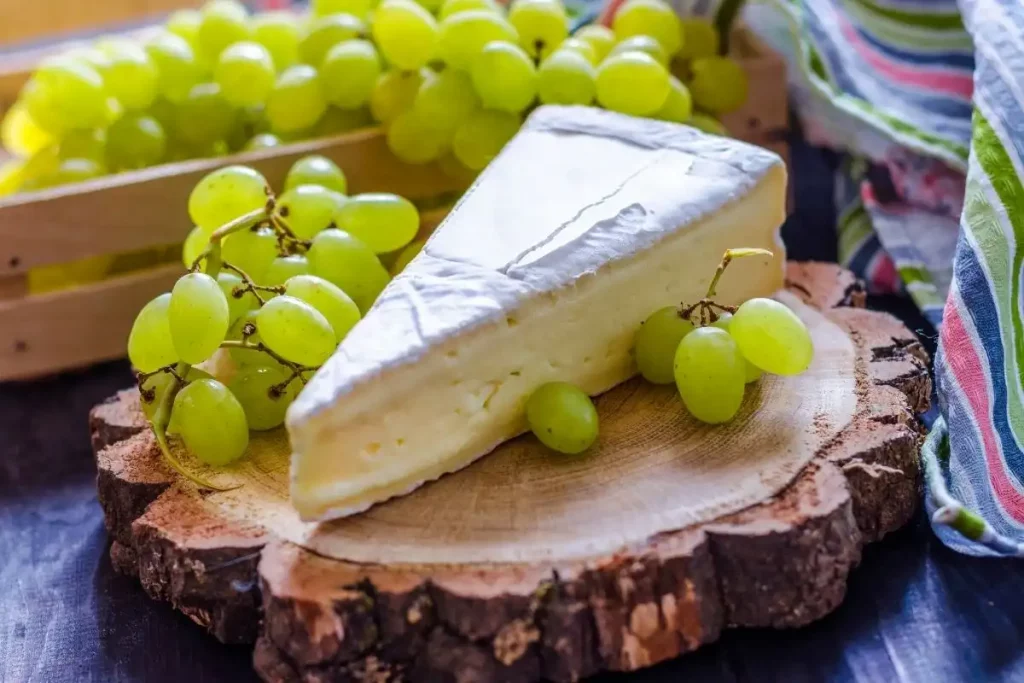
No século XIX
Foi no século XIX que o Brie de Meaux viu realmente a sua popularidade subir em flecha.
Num dos banquetes mais prestigiados da história, o Congresso de Viena, o diplomata francês Talleyrand, do século XIX, teria apelado a uma pausa na divisão das nações, na sequência da queda do Império Francês, a fim de organizar um concurso de queijo.
The most delicious variety of cheeses from around the world has been chosen, and everything has been carefully scrutinized.
O Conde de Ségur apresentou Limberger, Stilton foi representado por Lord Castlereagh de Inglaterra, o Barão de Falck dos Países Baixos nomeou Limberger, a Itália escolheu Strachino, e a Suíça seleccionou o Gruyere cheese as just a few examples.
O Duque de Talleyrand permaneceu calado até ao fim, quando o Brie foi levado para a mesa.
Após a votação, todos elogiaram a cozinha francesa e declararam que não havia outro queijo que se aproximasse do Brie de Meaux, proclamando o novo rei dos queijos: “Le Roi des Fromages“
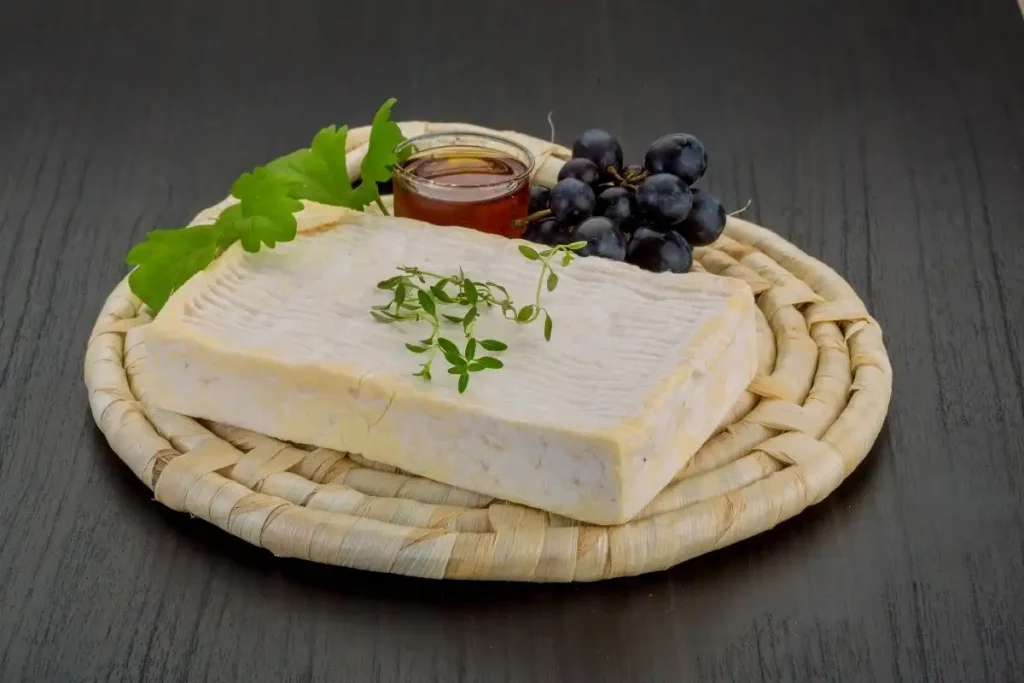
Brie cheese flavor
O sabor do queijo brie é muito semelhante ao do queijo camembert. Para muitas pessoas, ele tem sabor a erva, salgado, a nozes, frutado e semelhante a cogumelos. O seu sabor não pode ser comparado a outros queijos, como é o caso do gruyere or the gouda.
Quando comparado com o queijo camembert, o queijo brie tem um sabor mais suave com um toque mais amanteigado e cremoso. Para o camembert, o sabor e os aromas são terrosos e mais intensos.
A casca do bolor branco no queijo brie é também comestível e muito saborosa. O queijo brie pode ser utilizado de várias formas, mas deve ser mantido no ambiente mais frio da sua geladeira para evitar que fique rançoso muito rápidamente.
Quais são os diferentes tipos de queijo Brie
O Brie é um queijo bem conhecido, o que tem resultado em numerosas variações ao longo dos anos. O governo francês, por outro lado, reconhece apenas duas versões como autenticamente francesas:
- Brie de Meaux
- Melun Brie
Estes são os 2 tipos de queijo brie , que são reconhecidas e autenticadas, todos os outros tipos de queijo brie não tem este reconhecimento, no entanto não deixam de ser queijos muito saborosos e com um elevadíssimo requinte gourmet.
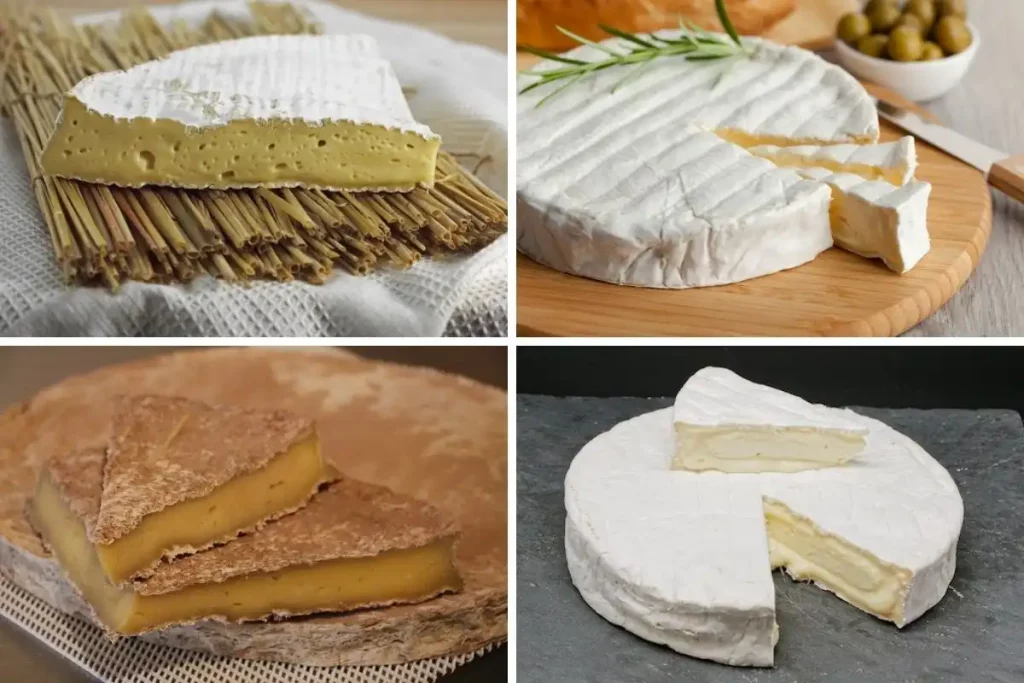
Estes são os 5 tipos de queijo brie mais conhecidos mundialmente:
- Brie de Meaux – Este Brie é originário da cidade de Meaux e tem um sabor e cheiro suave. É produzido em formas grandes, pesando normalmente cerca de 1.5 kg.
- Melun Brie – Este Brie tem um sabor e um aroma mais fortes do que o Brie de Meaux. É feito em rodas mais pequenas, pesando tipicamente cerca de 1.3 kg.
- brie noir – É um tipo de queijo brie que foi envelhecido durante mais tempo do que as típicas cinco semanas. Ele é mais escuro, mais seco, mais crocante e mais saboroso do que o brie mais jovem.
- Double- and triple-crème brie – Os queijos rotulados como “double-” ou “triple-crème” têm creme extra adicionado à mistura antes da formação da coalhada. O queijo “double-crème” tem um teor de gordura butírica de pelo menos 60%, enquanto que o “triple-creme” requer pelo menos 75%.
- Herbed Brie – Enquanto a maioria do queijo brie é vendido simples, existem também queijos brie onde são adicionadas ervas e outros ingredientes durante o seu processo de fabrico. Os ingredientes mais comuns são tomilho, rosmaninho e alho.
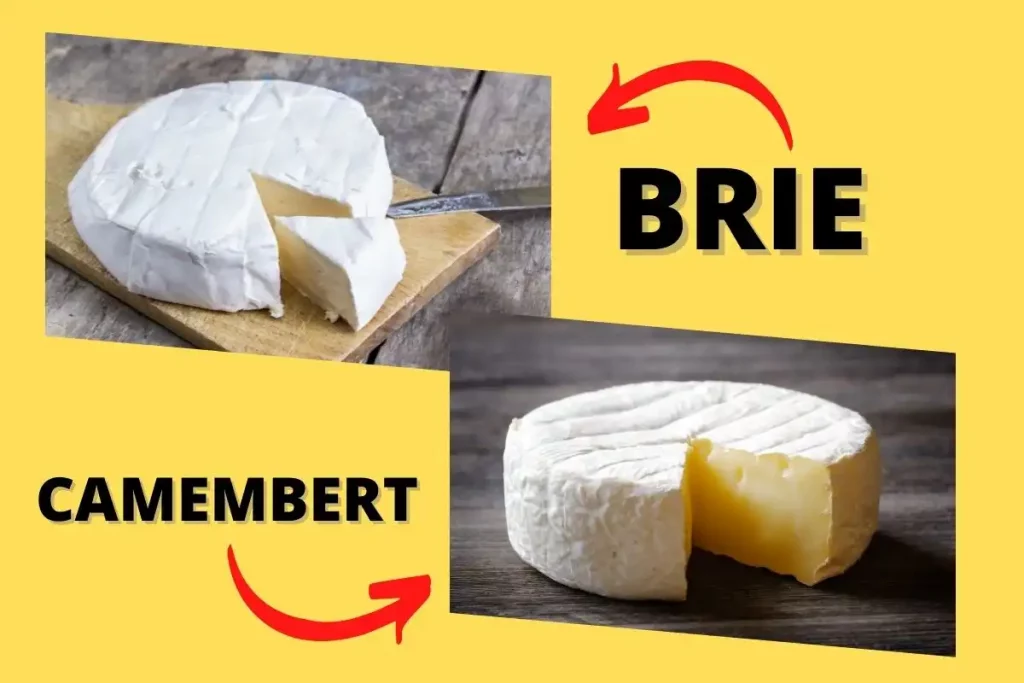
Diferenças entre o queijo Brie e Camembert
Brie e Camembert podem ser servidos da mesma forma, têm histórias comparáveis, e são produzidos a partir de receitas semelhantes, mas há distinções significativas entre eles. Eis o que precisa de saber sobre cada uma delas.
História e Origem
Embora não exista um registo oficial, acredita-se que o queijo Brie existe há mais tempo do que o queijo Camembert.
Embora ambos os queijos sejam originários de França, o Brie é originário da Ile-de-France, e o seu nome descende da região de Brie. Já o queijo Camembert é fabricado na Normandia, no noroeste de França.
Production
Brie e Camembert são ambos queijos de leite de vaca, mas um deles tem o maior teor de gordura. O queijo Brie tem mais gordura de leite porque a adição de nata resulta numa textura mais cremosa.
Também é possível comprar o queijo Brie triplo creme, que é extremamente suave, cremoso, e delicioso.
Size
Esta é uma área em que estes dois queijos realmente se destacam. Até comprar os dois ao mesmo tempo, nunca tinha reparado nisso antes. Talvez você também nunca reparado.
O queijo Brie é frequentemente vendido à fatia, uma cunha da roda maior, enquanto o Camembert é vendido inteiro na sua forma característica.
A razão para isto é que Brie, por outro lado, vem num tamanho muito maior. Uma roda de Brie mede entre 22 e 42 centímetros de diâmetro, enquanto que Camembert tem apenas 13 centímetros width.
However, the “baby Brie” atualmente é vendido em muitos supermercados, que é comparável em tamanho a Camembert mas tem um sabor mais delicado.
flavor and texture
Camembert e Brie são muito semelhantes em termos de sabor. Diz-se que ambos têm um sabor a nozes, frutado, herbáceo, terroso, e até a cogumelos.
As variações de sabor são subtis, mas o Brie tem um sabor mais cremoso e amanteigado, enquanto que o Camembert tem um sabor e fragrância mais profundo, mais terroso e saboroso.
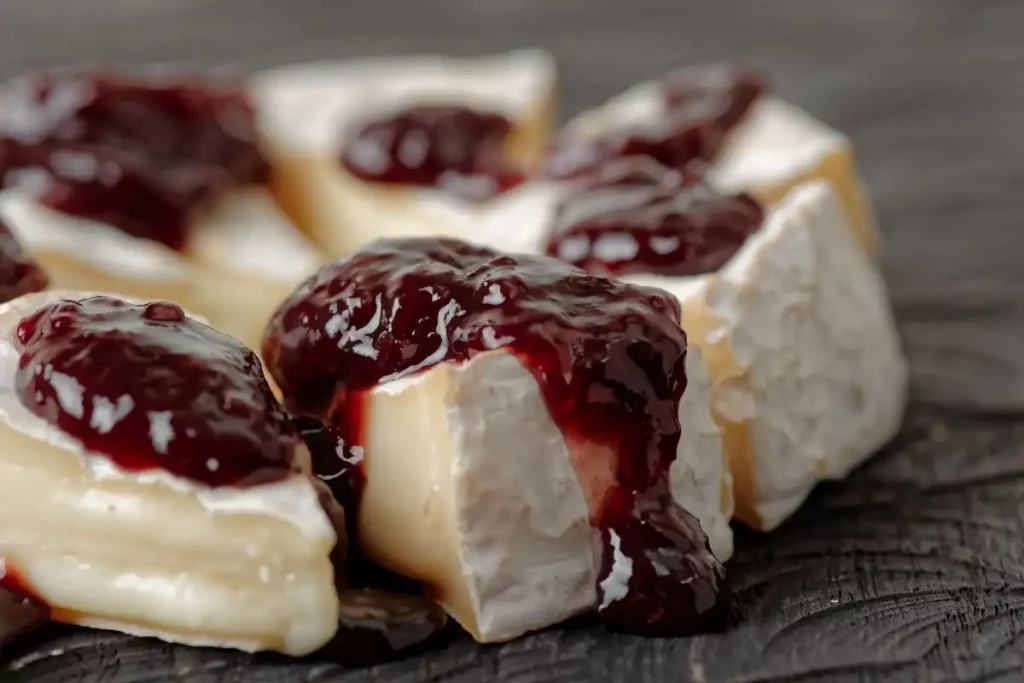
Benefícios para a saúde do queijo Brie
As vantagens do queijo Brie para a saúde são atribuíveis á sua riqueza em proteínas, vitaminas e minerais.
O queijo Brie é rico em proteína de caseína, vitamina B12 para a produção de energia, cálcio para ossos fortes, e vitamina A para uma resposta mais forte do sistema imunitário.
O queijo Brie pode ajudar na redução de peso e pode ser incluído numa dieta equilibrada..
Can help with weight loss
No passado, as pessoas eram aconselhados a evitar produtos lácteos gordos como o queijo brie para perda de peso, uma vez que se pensava que a gordura nos lacticínios causava ganho de peso.
Acontece que não é assim. Pois não uma ligação directa entre o leite gordo e o peso corporal, de acordo com um study published in the European Journal of Nutrition.
A caseína, que é uma proteína do leite presente na maioria dos queijos, incluindo o queijo brie, é uma proteína de alta qualidade que é adorada pelos fisiculturistas e entusiastas de fitness.
Isto, deve-se às suas capacidades de longa duração de alimentação de proteínas. A digestão da proteína de caseína é mais lenta, por isso é óptima para períodos prolongados sem comer, como por exemplo durante a noite.
Ajudando o indivíduo a ficar mais tempo cheio e a comer menos calorias. Studies demonstraram que uma dieta rica em caseína pode ajudar a perder peso, especialmente quando associada a uma rotina de exercício.
A pessoa terá melhor controlo sobre as escolhas alimentares e consumirá menos em geral, uma vez que uma dieta rica em proteínas é mais satisfatória.
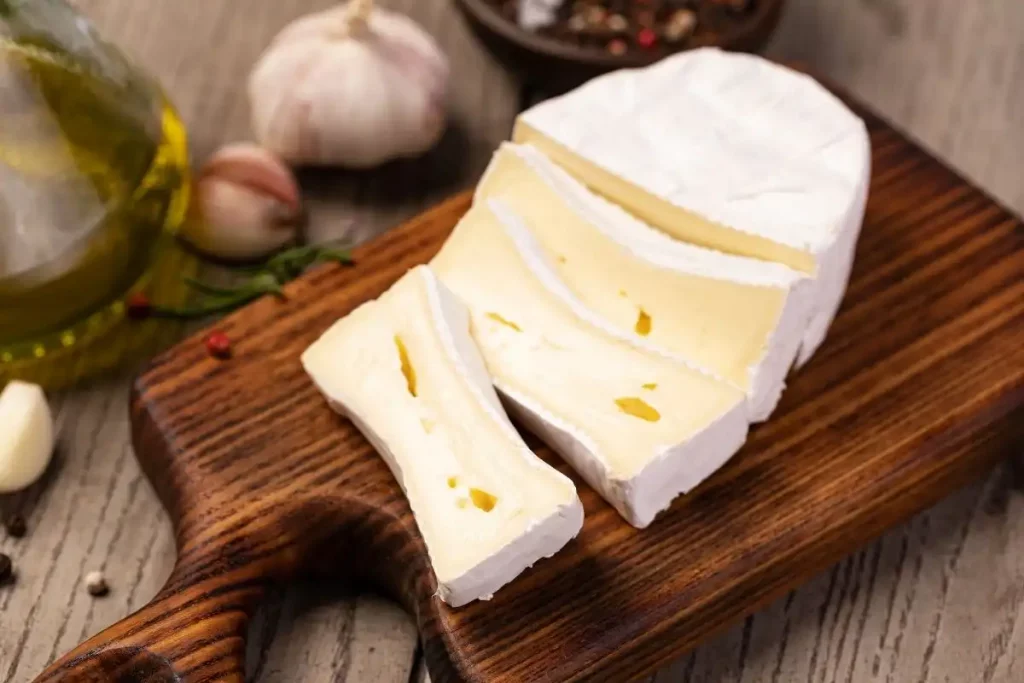
Can increase energy and mood
Uma dose de queijo Brie contém uma boa quantidade de vitamina B12 ou cobalamina, que é um nutriente importante para uma função nervosa saudável.
A síntese de ADN e a actividade normal das células nervosas estão dependentes da vitamina B12. Uma vez que o organismo não é capaz de sintetizar a vitamina B12 por si só, esta deve ser obtida através da alimentação.
We risk a deficiência de vitamina B12 se não consumir o suficiente, conhecida como anemia megaloblástica, na qual o nosso corpo é incapaz de transportar eficazmente o oxigénio para os órgãos vitais. Esta condição causa fraqueza e cansaço.
É importante aumentar a ingestão de vitamina B12, tanto para prevenir uma deficiência como para melhorar os níveis de energia.
Além disso, um défice de vitamina B12 tem estado ligado a uma depressão grave. A vitamina B12 é também benéfica para aqueles que sofrem de sintomas adversos de deficiência de vitamina B1.
Para indivíduos com depressão, níveis mais elevados de vitamina B12 têm sido ligados a melhores resultados de recuperação, indicando um impulso no humor.
Pode contribuir para a fortalecimento ósseo
O queijo Brie é um dos poucos produtos lácteos que satisfaz ou excede a dose diária recomendada para o cálcio (5%). O cálcio é um mineral importante envolvido na formação, força, e crescimento saudável dos ossos.
According to one study, tomar suplementos de cálcio e comer mais alimentos ricos em cálcio pode ajudar a reduzir a fragilidade óssea.
Se não consumir cálcio suficiente, os seus ossos podem enfraquecer e colocá-lo em risco de osteoporose. Deverá consumir entre 1,000 to 1,200 miligramas de cálcio diariamente para garantir o níveis recomendados desta vitamina.
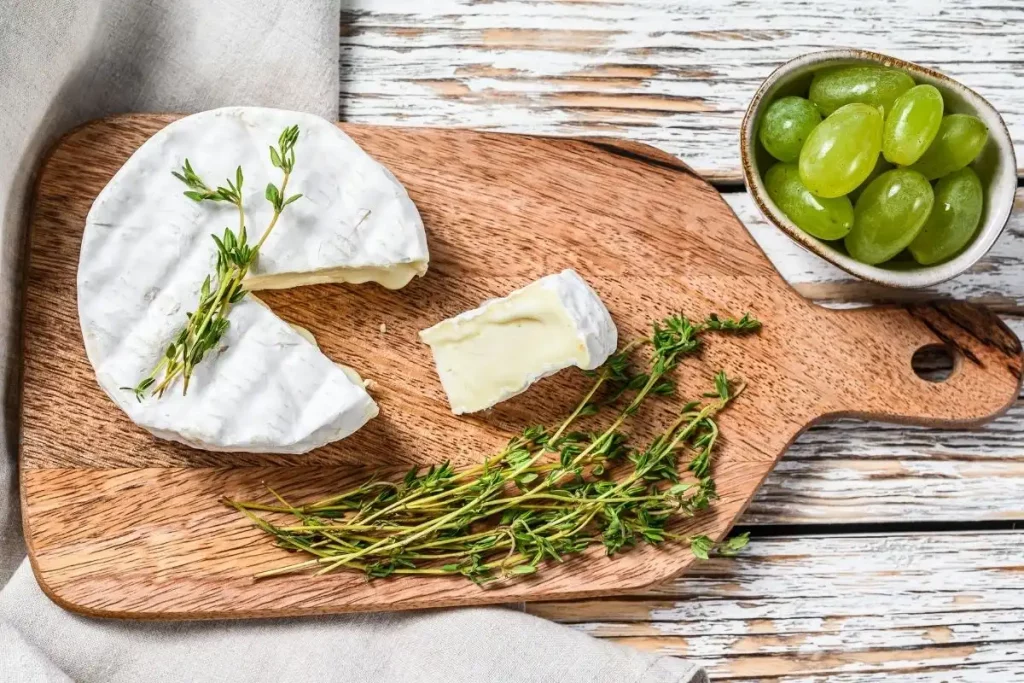
Pode reforçar o sistema imunitário
The vitamin A é uma vitamina lipossolúvel que contribui para o desenvolvimento e fortalecimento do sistema imunitário. Tem fortes propriedades anti-inflamatórias, que ajudam a aumentar a resposta do sistema imunitário e a combater infecções virais, tais como o resfriado comum e a gripe estomacal.
Uma falta de vitamina A pode ocorrer se não se comer alimentos suficientes que sejam ricos nesta vitamina. É também algo a pensar, uma vez que um défice de vitamina A é a doença mais prevalecente no mundo.
The insuficiência de vitamina A, por outro lado, pode torná-lo mais suscetível a doenças e ter mais dificuldade em combater a infecção.
Pode promover a saúde cardíaca
Apesar do queijo brie ser rico em gordura saturada, também contém uma variedade de outros componentes que podem beneficiar a saúde do coração, tais como proteínas, cálcio e vitamina D. Além disso, estudos recentes sugerem que produtos lácteos gordos como o queijo brie podem ser benéficos para o coração.
One research published in the Journal of Nutrition and Metabolism em 2021, concluiu que o consumo de gordura láctea estava ligado a uma diminuição da incidência de doenças cardíacas.
Embora os resultados sejam encorajadores, os investigadores sublinham que é necessária fazer investigações adicionais para determinar como os produtos lácteos com gordura afetam na saúde cardíaca.
Nutritional value of Brie cheese
Nutritional data per slice of brie cheese (approximately 28g) são:
| nutrients | The amount |
| calories | 95 Kcal |
| Fat | 7.9 g |
| Sodium | 178 mg |
| carbohydrates | 0 g |
| Fiber | 0 g |
| Sugar | 0 g |
| Protein | 5.9 g |
| Calcium | 52.2 mg |
| Phosphor | 53.3 mg |
| Vitamin A | 168 IU |
| B12 vitamin | 0.468 mcg |
calories
Uma fatia de 28g de queijo brie tem 95 calorias. O seu conteúdo calórico é maioritariamente composto por gordura, sendo o restante proveniente de proteínas. O queijo brie contém cerca de 75% of fat and 25% de proteínas em calorias.
fats
A 28g slice of brie cheese has 7.9g of total fat, 4.93g of saturated fat, 2.27g of monounsaturated fats, and 0.23g of polyunsaturated fats.
Saturated fats should represent about 10% do consumo diário total de gorduras, enquanto o resto deve provir de variedades não saturadas. As gorduras monoinsaturadas perfazem 2,27 gramas numa única fatia de queijo brie.
Protein
O queijo Brie é rico em proteínas lácteas. Uma fatia de 28 gramas contém 5,9 gramas de proteína. O brie é feito com leite inteiro, água, proteína (caseína e soro), gordura, açúcar, vitaminas e minerais são os seus componentes principais.
Durante o processo de fabricação do queijo, a água e o soro são retirados, deixando apenas caseína coalhada.
Vitamins and Minerals
O queijo Brie é um queijo rico em nutrientes, rico em cálcio, fósforo, vitamina A, e vitamina B-12. Uma fatia de 28 gramas de queijo brie tem 52 milligrams of calcium.
Também contém 7% da Dose Diária Recomendada (DDR) de fósforo, 20% da DDR de vitamina A, e 20% da DDR de b12 vitamin.
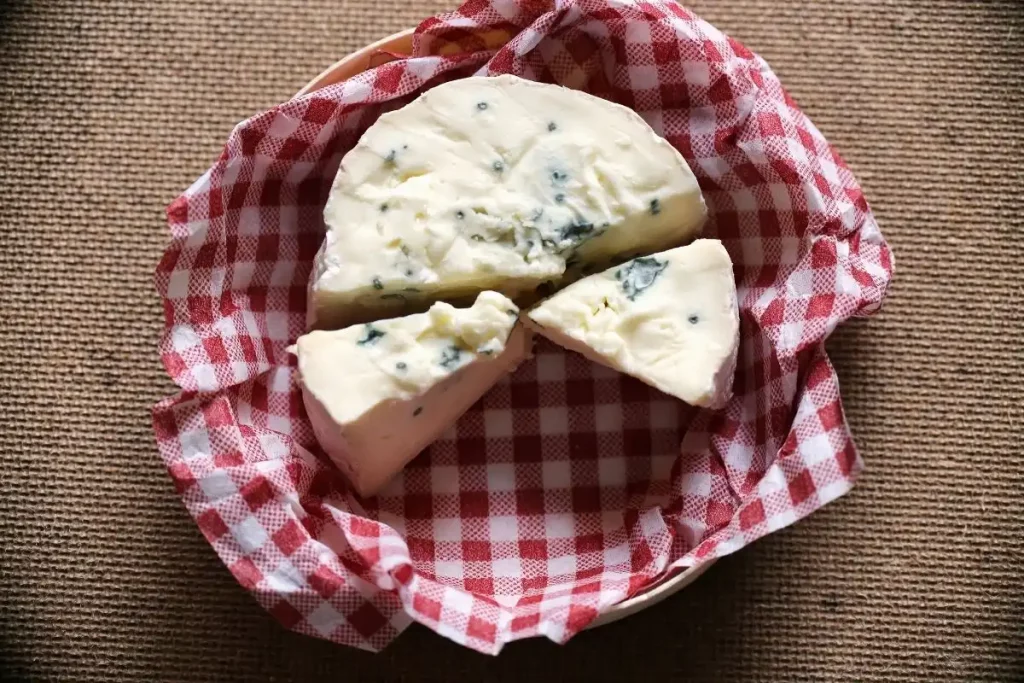
como é produzido o queijo Brie
A chave para alcançar a consistência correcta e o espectro completo dos gostos é permitir que o queijo Brie cuide a si próprio. A maturação e o alisamento da crosta são fundamentais para o desenvolvimento do sabor e da textura.
O processo é iniciado com o leite pasteurizado ou cru das vacas, e são adicionadas enzimas e coalho ao leite, ajudando-o a coagular. Também é adicionada uma cultura de levedura para fomentar o bolor branco.
Após a coalhada ter endurecido, é cortada e enrolada em moldes, com qualquer soro de leite extra a ser removido. É então cuidadosamente salpicado para preservar o seu sabor suave, impedindo ao mesmo tempo o crescimento excessivo de bolor.
A seguir, o queijo é envelhecido durante uma semana, permitindo o desenvolvimento da casca e a melhoria das complexidades. A maturação do queijo Brie passa normalmente de firme a maduro entre 4 to 5 weeks, in order to have a more slippery texture.
A utilização de leite cru ou pasteurizado está dependente do tipo de Brie. Da mesma forma, cada queijo tem o seu próprio conjunto único de requisitos de coalho.
O Brie orgânico é frequentemente pasteurizado, mas se não tiver a certeza, verificar o rótulo ou perguntar ao vendedor é normalmente uma boa ideia.
how to store brie cheese
Descubra como armazenar o queijo Brie para que dure o máximo de tempo possível e não se estrague.
Room temperature
O Brie deve ser servido à temperatura ambiente após ser refrigerado. Retirar o queijo do frigorífico uma hora antes de o servir para um melhor sabor e textura.
Embora o queijo brie seja mais saboroso quando comido ao natural, ele só pode ficar á temperatura ambiente no máximo durante 4 horas, após esse período deverá ser colocado de novo na geladeira.
Best way to store Brie in the fridge
A forma ideal de armazenar Brie fresco, é na gaveta de legumes da geladeira, e na sua embalagem original fechada.
How long does Brie cheese last in the refrigerator drawer unopened in its original packaging? When stored correctly, o brie pode durar até dois meses na geladeira.
However, wrap it in kraft paper or wax paper after opening the cheese. Evite guardá-lo em papel de plástico, since whole cheeses need to breathe.
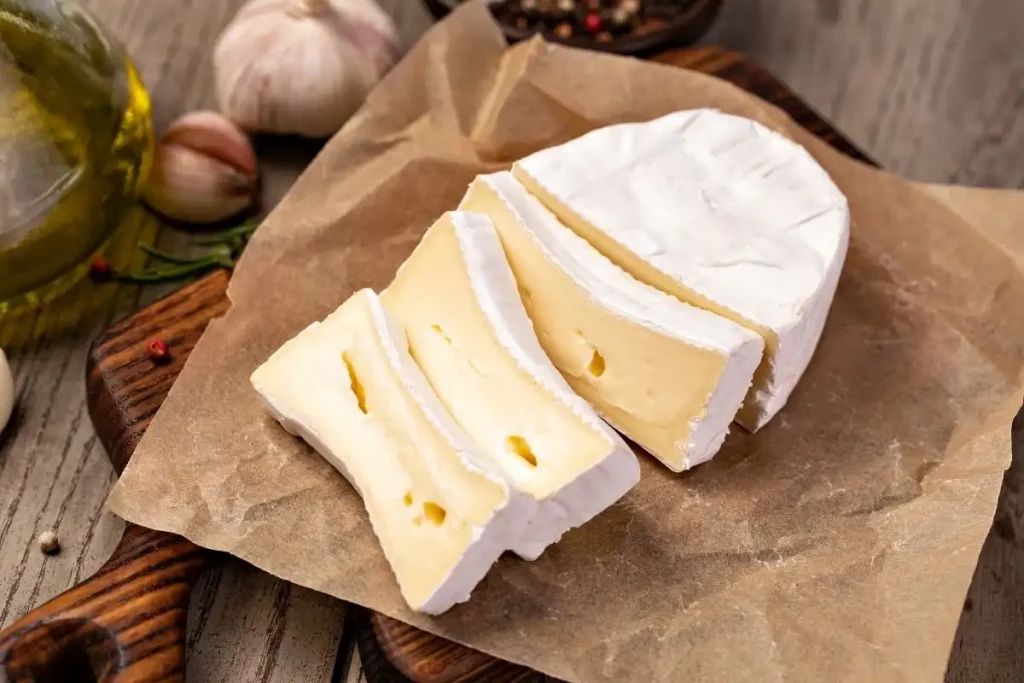
How to store Brie in the Freezer
Se estiver a pensar quanto tempo o Brie dura no freezer, é seguro dizer que o congelador é uma opção. Embora a maioria das pessoas acredite que congelar queijo mole não é uma boa ideia e que o melhor lugar para manter o Brie é na geladeira. Embora seja preferivel, do que ter que deitar o queijo para o lixo.
Para congelar o Brie inteiro, deve envolvê-lo numa folha de alumínio, depois colocá-lo num saco de congelação e empurrar para fora o máximo de ar possível antes de fechar. Ponha no freezer e use-o para fazer queijo Brie assado ou grelhado.
Para congelar fatias de Brie, deve forrar uma assadeira com um tapete de silicone e colocar as fatias de queijo numa única camada para evitar a colagem. A seguir ponha o tabuleiro no freezer durante várias horas até o queijo estar solidificado, depois já pode pôr o queijo num saco de congelação ou para um recipiente hermético no freezer.
To thaw the brie cheese, remove it from the freezer and place in the refrigerator. Thin slices take approx. one hour to defrost, e um queijo inteiro vai demorar a noite inteira para descongelar totalmente. O descongelamento do queijo brie não é necessário se você pretender derreter o queijo.

How to eat Brie cheese
Ao preparar o Brie, retire-o da geladeira 60 minutos antes de o servir. O queijo ficará mais cremoso se o deixar chegar à temperatura ambiente antes de comer.
Coloque a roda ou cunha num tabuleiro com uma faca e os seus acompanhamentos à escolha. Se servir uma roda, corte uma ou duas cunhas pequenas antes do tempo. Isto dará aos seus convidados uma ideia de um tamanho de porção apropriado.
Se servir uma cunha, não corte a ponta do queijo, que é muitas vezes a parte mais saborosa. Em vez disso, corte ao longo da lateral da cunha. Isto garantirá que todos possam provar cada parte do queijo.
O Brie sabe melhor quando se come lentamente. Não é necessário colher metade da cunha, espalhar o queijo ou fazer uma sanduíche com ele. Basta combinar um pequeno pedaço de queijo com um pequeno pedaço de pão para uma refeição elegante mas simples.
E sim, pode comer a casca! De facto, é considerado por alguns como gaúcho apenas raspar o interior do queijo e evitar a crosta. Mais uma vez, vá em frente e dê o exemplo aos convidados no caso de ficarem confusos.
What drinks go with Brie cheese
O queijo brie completa-se com a bebida que combina com ele na perfeição. Assim mostro para vocês quais as bebidas que melhor combinam com este delicioso queijo.
Chardonnay
Uma das características mais distintivas do brie é a sua gordura total. É um queijo com alto teor de matéria gorda. Para cortar através da gordura, o brie precisa de uma contraparte ácida que seja afiada. Um Chardonnay com o qual servir o queijo faz uma excelente combinação.
The acidity of the wine helps to cleanse the palate, preventing the richness of the cheese from overpowering it. The wine has enough body to balance the creaminess of the cheese, which makes it an excellent addition.
Pinot Noir
O queijo Brie tende a assumir uma textura semelhante a um cogumelo que se torna mais proeminente à medida que o queijo amadurece.
O Pinot Noir pode não ser o primeiro vinho que me vem à mente quando penso num queijo mais suave, mas é o complemento perfeito para os sabores distintos do queijo. É também suficientemente ácido e leve para não se sobrepor.
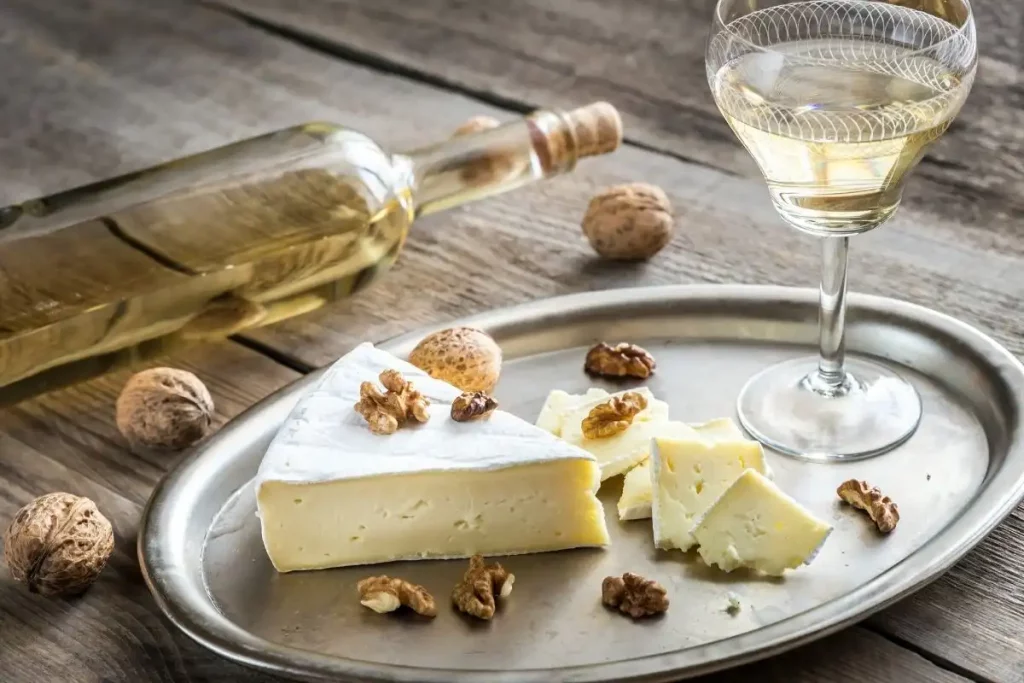
Chenin Blanc
O Brie tem um aroma delicado a nozes, semelhante ao das amêndoas. Um Chenin Blanc levemente nu, com a mesma subtileza de nozes, é também maravilhoso.
A crocância das notas de maçã e pêra em Chenin Blanc contrastam com a nozes do brie e ajudam a fazê-las sair. A forte acidez deste vinho ajuda na redução do elevado teor de gordura do brie.
Riesling
O sabor do brie foi comparado ao da manteiga acabada de cozer. Um Riesling um pouco seco irá complementar bem a delicada doçura do queijo.
As uvas Riesling são mais difíceis de cultivar, e o vinho resultante é rico em acidez. Este Riesling tem apenas um pouco de doçura para complementar a doçura do queijo, mas ainda tem muita acidez para evitar que a combinação se torne enjoativa. Os Rieslings secos também são compatíveis com este queijo.
champagne
O Brie é uma combinação maravilhosa para o sabor a tostado e a brisa do Champanhe devido aos seus tons amanteigados e terrosos.
O champanhe é igualmente ácido, como o Chardonnay e o Chenin Blanc. Esta acidez complementa a qualidade deliciosamente gaseificada do vinho espumante de forma semelhante à do Chardonnay e do Chenin Blanc.
O Brie, por outro lado, amacia as características frutadas do Champagne, ao mesmo tempo que aumenta a sua acidez crocante. O Brie com um pouco de baguete é uma das melhores combinações com Champagne.
Sauvignon Blanc
O vinho branco combina muito bem com queijos suaves e cremosos como o brie, uma vez que os brancos estaladiços os complementam. O Sauvignon Blanc é outra boa combinação porque é tipicamente emparelhado com queijo de cabra, que tem tanto tons terrosos como azedos. As qualidades crocantes e frutadas do vinho convidam estes elementos a sair.
O Brie pode ser produzido a partir de leite de cabra. O brie de leite de cabra é terroso, azedo e de nozes, com um perfil de sabor suave. Um Sauvignon Blanc pode ajudar a realçar esses gostos. O vinho também tem um nível de acidez significativo, que o queijo apreciará ao cortar através dos sabores gordurosos.
Se você gosta de um Sauvignon Blanc, não tenha medo de o emparelhar com um brie de leite de cabra. Considere um copo com o queijo sózinho ou com um arando, brie, maçã e tomilho crostini.
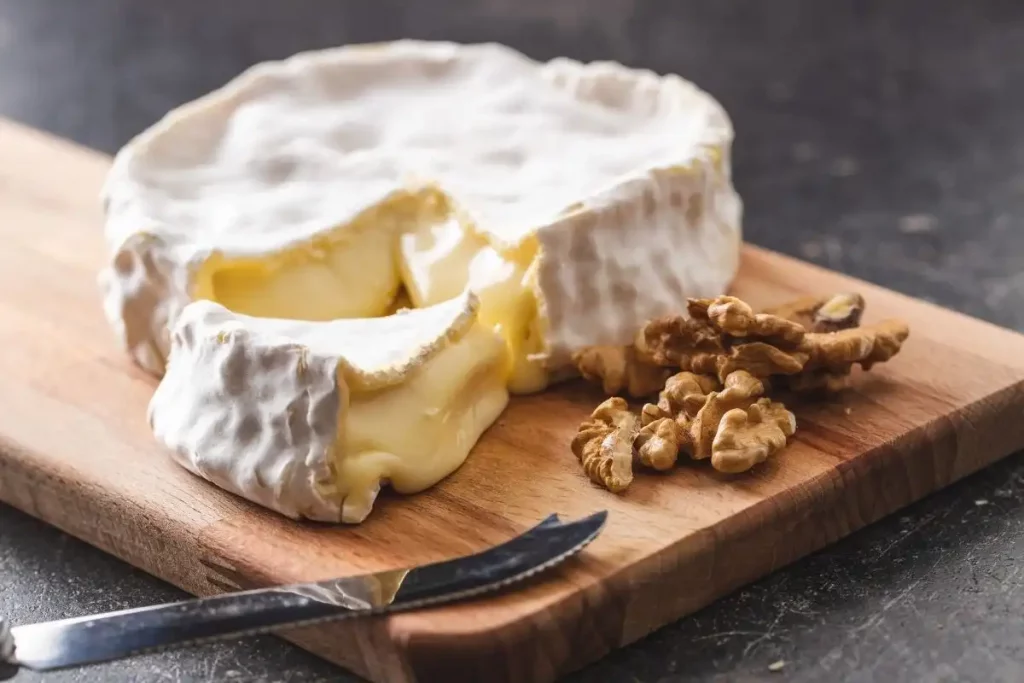
Brie cheese substitutes
Caso pretenda um queijo que substitua o brie, por não existir na sua região ou por qualquer outro motivo, confira as melhores opções:
camembert
O queijo Camembert é um bom substituto para o Brie porque tem um sabor bastante semelhante ao Brie. O Camembert é também um queijo nativo francês curado que é geralmente servido à temperatura ambiente. Tem um diâmetro inferior ao do queijo Brie, mas o que lhe falta em tamanho, mais do que compensa em sabor.
O queijo amadurecido tem, por outro lado, um sabor mais intenso quando comparado lado a lado, o que certamente dará à sua refeição um sabor único.
Quando fizer a substituição do queijo Camembert pelo Brie, deverá ter em atenção que o queijo Camembert pode ter uma textura mais escorregadia.
Fromager d’Affinois
Este queijo francês é excelente substituto para o queijo Brie. Ele é fabricado pela firma Fromagerie Guilloteau, e tem as mesmas características que o queijo Brie.
Tal como o queijo Brie, é um queijo de pasta mole de creme duplo curado. A única diferença é que o Fromager d’Affinois é submetido a um processo de ultrafiltração.
Processo esse que oferece um sabor agradável e doce que poderá tornar qualquer receita simples de brie em algo que você adorar fazer diariamente.
Se não tiver queijo Brie, pode usar Fromager d’Affinois como substituto. A única desvantagem de utilizar Fromager d’Affinois é que tem um sabor mais forte do que o queijo Brie.
Quando utilizar este queijo em substituição use apenas metade da quantidade, em comparação com o brie.
Explorateur cheese
O queijo de pasta mole com triplo creme é também um queijo nativo francês. É um queijo de leite de vaca curado, como o queijo Brie. Foi produzido na região de Île-de-France de França nos anos 50 para comemorar o primeiro satélite americano, “Explorer”
O sabor do Explorador é suave e amanteigado, com notas de cogumelos e notas frutadas debaixo dos tons; pode ser um maravilhoso elogio às suas refeições. O queijo tem um interior firme que se amolece à medida que envelhece.
O queijo explorateur tem um sabor suave semelhante ao queijo Brie, tornando-o um excelente substituto. Ao substituir, usar uma proporção 1:1.
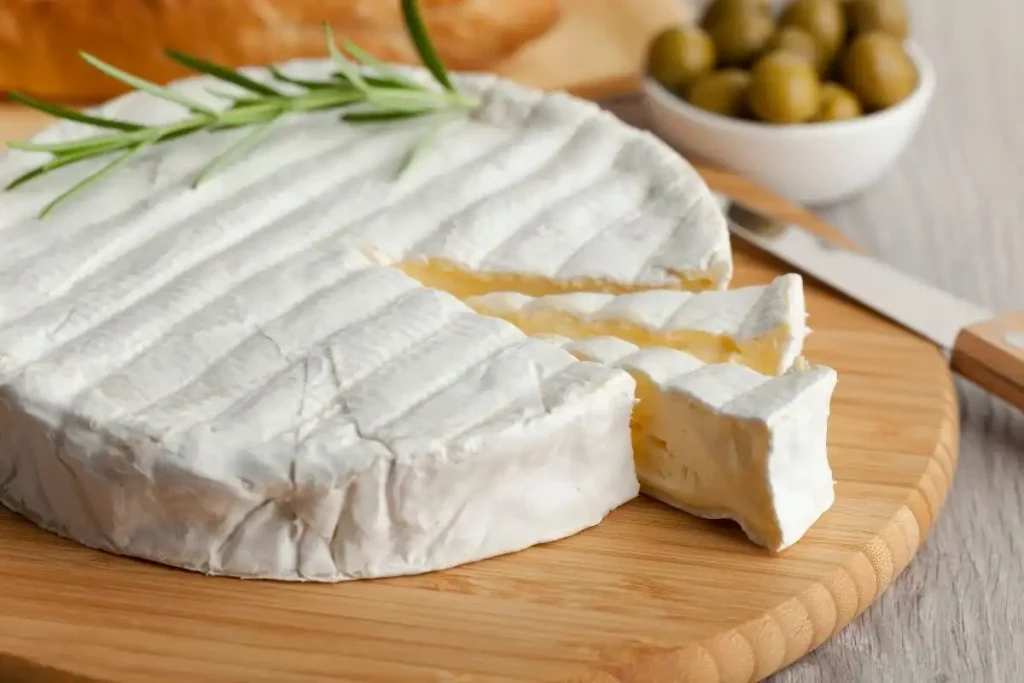
Recipes that use Brie cheese
Neste momento você já deve estar bem esclarecido em relação ao queijo brie. No entanto falta algo muito importante para terminarmos em beleza 🙂
I'm referring to some of the best recipes that use brie cheese as one of their main ingredients.
Check it out now!
3 Ways to Make and Eat Brie Cheese
Normalmente trago 3 receitas distintas, mas hoje compartilho uma vídeo receita que oferece 3 receitas onde é utilizado este delicioso queijo.
Mas a parte que mais gostei, foi o fato de ser muito simples, fácil e rápido de fazer, mas com um resultado divinal!
final words
Se chegou até aqui, é porque teve interesse em ler este artigo. Para a nossa equipe da cozinha da vê é maravilhoso termos agradado o leitor.
Agora que terminamos deixe ai nos comentário se já comeu o queijo brie e o que achou do seu sabor?
Se gostou deste conteúdo ou se tiver sugestões para melhorarmos os próximos artigos é muito bem vindo o seu comentário, além de ajudar-nos ao partilhar com pessoas que são interessados neste assunto.
Common questions
Se mesmo assim ficaram dúvidas sobre o queijo Brie, então deixamos para vocês algumas perguntas que nos têm sido colocadas em relação a este delicioso queijo.
Check it out now!
Can you eat raw brie cheese?
Não é recomendado comer queijo brie cru sem que este tenha sido maturado e envelhecido durante pelo menos 5 to 6 weeks. Embora o queijo brie jovem seja muito saboroso, não deve fazê-lo por motivo de segurança alimentar.
What does brie cheese taste like?
O sabor do queijo brie é muito semelhante ao do queijo camembert. Para muitas pessoas, ele tem sabor a erva, salgado, a nozes, frutado e semelhante a cogumelos. O seu sabor não pode ser comparado a outros queijos, como é o caso do gruyere or the gouda.
Can you eat the brie rind?
Sim, pode claramente comer a casca do queijo brie, e para ser o mais honesto com você, a casca é parte mais saborosa deste queijo.
Why is brie cheese bitter?
então poderá ter sido usado um coagulante menos indicado , o que poderá provocar o sabor amargo no queijo brie.
Verônica Ribeiro, the creative mind behind “Cozinha da Vê”, is passionate about flavors and aromas and transforms her passion for cooking into irresistible recipes. With a unique ability to combine ingredients and a special touch of affection in each dish, she conquers hearts and palates, making cooking a truly delicious experience on her blog.
